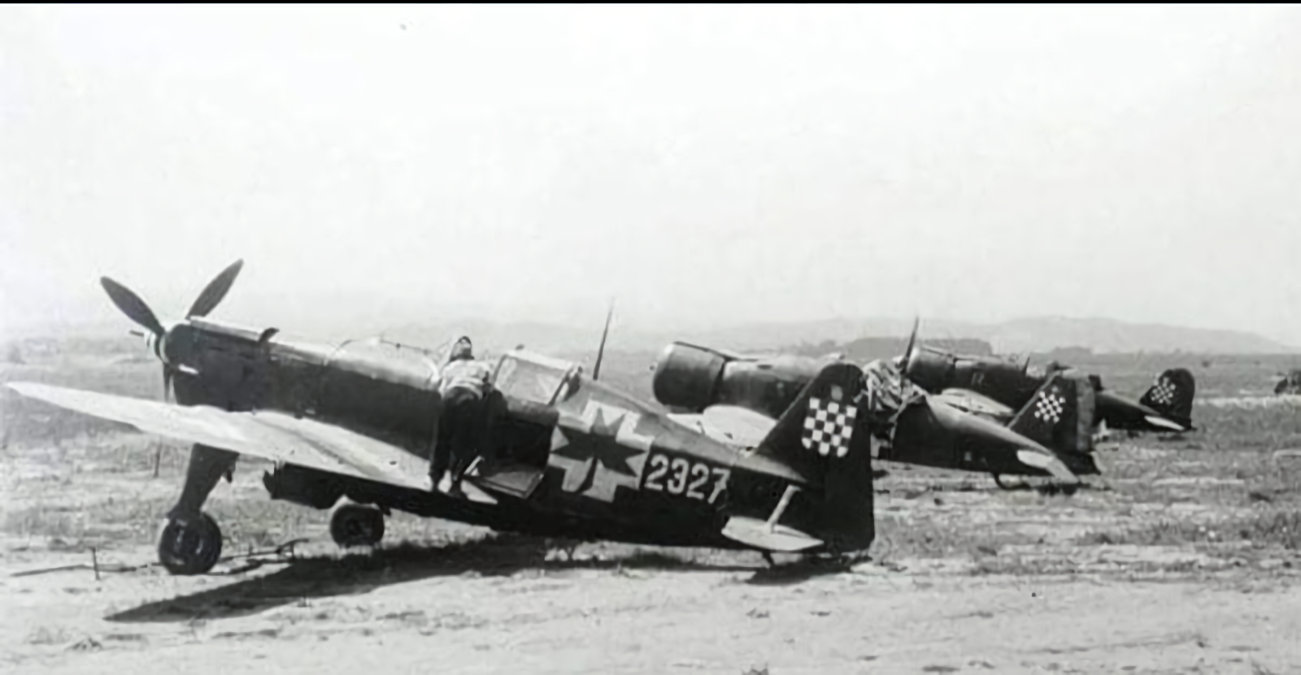Morane-Saulnier M.S.406 In Croatian Service
The Morane-Saulnier M.S.406 was one of France’s principal fighter aircraft at the outbreak of the Second World War. Though quickly rendered obsolete by rapid wartime advances, the aircraft found a second life in several air forces across occupied Europe. Among the lesser-known operators was the air arm of the Independent State of Croatia (Nezavisna Država Hrvatska, or NDH), which received a small number of these aircraft during the conflict. Their service in Croatian hands reflected both the aircraft’s declining combat value and the complex political alignments of wartime Europe.
After France’s defeat in 1940, the German Luftwaffe captured large quantities of French military equipment, including hundreds of M.S.406 fighters and their later variants. Many of these were distributed to Axis allies and puppet states to supplement their limited air power. The Independent State of Croatia, established in April 1941 following the Axis invasion and partition of Yugoslavia, formed its own air force, the Zrakoplovstvo Nezavisne Države Hrvatske (ZNDH). Initially equipped with a mix of older Yugoslav and Italian aircraft, the ZNDH later received additional fighters from Germany to bolster its capabilities. Among these transfers were a small number of Morane-Saulnier M.S.406 aircraft.
The exact number of M.S.406s delivered to Croatia is uncertain, with most sources suggesting between 38 and 46 aircraft arriving around 1943. These were drawn from Luftwaffe stocks of captured French machines, many of which had been stored or used for training purposes. The fighters retained their French armament of one 20 mm Hispano-Suiza cannon and two 7.5 mm machine guns, though ammunition supply occasionally proved difficult.
Within the ZNDH, the Morane-Saulniers were used primarily for air defence and training rather than offensive operations. By the time they entered Croatian service, the aircraft’s design was outdated compared with the Allied and even Axis fighters of the mid-war years. Nonetheless, they provided a useful means for pilot instruction and local patrol duties. Croatian pilots valued the M.S.406’s forgiving handling characteristics, which made it suitable for training new airmen transitioning to more advanced types. Operational sorties were rare, though some aircraft were reportedly used for ground-attack missions against Partisan forces in the rugged countryside of Bosnia and Dalmatia.
As the war turned against the Axis, the ZNDH faced increasing logistical and operational difficulties. Fuel shortages, Allied air superiority, and the steady advance of Partisan and Soviet forces made flying operations hazardous. Many of the Morane-Saulniers were lost through attrition or grounded due to lack of spares. By late 1944, only a handful remained serviceable, and these were eventually abandoned or destroyed as Croatian and German forces retreated.




